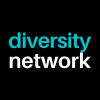Johanna Chan is Director of ESG and Impact Integration at Dream Impact in Hong Kong, a DEI and ESG consultancy (pictured second from left).
Johanna opened Hong Kong’s first environmental and social governance lab, and here she shares her advice for practitioners interested in the increasing link between diversity and inclusion initiatives, and ESG.
Q What is the relationship between DEI and ESG?
A “The number one thing for DE and I is the people.
“This year we have found resistance with HR and finance departments in some organisations when the culture is not there to push ESG forward. So we break it down: Social is the big trend this year; last year, organisations began to take the Environmental aspect more seriously.
“Social metrics is what we find can help convince people to get everyone including stakeholders involved, by explaining the social impact on society. It’s a big task to get everyone involved – but with a diverse workforce and community engagement, we know that we can prove it has a positive effect on employee loyalty and financial success.
“We work with different organisations from SMEs to listed companies who are struggling to align business units and departments within a company in the short term. They have a grand plan and targets for 2025, 2026 but they see a struggle for short-term implantation especially for hiring. Recruitment is the first step.
“So the major link between DEI and ESG is people.”
Q Can you share an example?
A “For past two years we have shifted from working with 126 social enterprises to these last two years when we are now introducing them to big companies. The major transit company in Hong Kong, the MTR, asked us to organise an inclusion week of internal engagement. We had 3,000 people involved from the company chef to stakeholders to the CEO. One of the benefits was the social enterprises sharing their stories with the MTR – and discovering a mutual benefit that they could help to fill the empty shop premises at train stations.”
Q Which metrics really matter for reporting purposes?
A “Number one – labour practices, especially employee health and safety, and also community engagement and thirdly, supply chain management.
“A lot of companies in Hong Kong put a lot of emphasis on philanthropy and charity separately from the running of the business but it should be integrated.
“We are at the beginning of our diversity journey here – for example, diversity is mostly concentrated on gender, and only two genders and not much more. Slowly, organisations are realising diversity is important for race, ethnicity and disability status as well. We encourage voluntary disclose of these stats when a new person is hired and encourage a safe working culture where new hires feel comfortable to share their information. Traditional Chinese companies are often afraid of opening up internally. But ESG should be going beyond reporting – that’s the point of it.”
Q How do the inclusion of DEIB metrics within ESG reports help foster inclusivity, equity, and social impact within businesses?
A “It’s worth highlighting one big metric on pay equity and linking DEI goals with incentives and pay. Those organisations that do, really help their company push forward the DNI agenda. In Hong Kong, if employees aren’t incentivised for such initiatives, they will question whether these initiatives are on top of their job and why they should include them in their daily work decisions. This is especially true at leadership level – senior management and board members. But if organisations include these incentives and reward their employees for DNI work, they will see results.”
Q Why can publishing DEIB metrics dramatically improve consumer and employee trust?
A“It’s a big part of stakeholder management and is part of the community as well – by leveraging DEI as an advantage, companies are able to engage diverse groups. I have an example of the insurance industry here in Hong Kong – they now target the neurodiverse community as a big group of customers: not just the idea of not excluding them but recognising them as a higher priority customer group.
“A big part of this is building trust and upgrading services so that neurodiverse people can access them. Also it’s about going beyond philanthropy – closing the gap and opening dialogue between the customer and the company, such as by holding community engagement meetings between customers, stakeholders and employees for mutual benefit.”
Q What metrics really matter, such as improved innovation, employee satisfaction, and financial performance?
A “Number one: the employee turnover rate. It tells a lot about the company particularly with the breakdown of age groups. There’s an ageing population in Hong Kong and we can no longer rely on the upcoming generation to fill in the workforce. We are seeing a higher retirement age and also the emergence of the ‘young-olds’ as we call them – good companies are engaging the over 65s as mentors. The flexible working environment is a great opportunity to do this.
“We are also seeing a split workforce – recognising that employees don’t necessarily have to work full time. One example is a bus company in Hong Kong: their coin-sorting department had a high turnover but when they engaged with an NGO to help with recruitment, they hired people with hearing disabilities. The noise of sorting the coins wasn’t an issue for them, unlike hearing people who kept leaving, and the organisation now has a stable and respectful workforce.
“Another example is a technology company which has actively hired people with ADHD and other neurodiverse conditions to become testers for apps. These jobs can really hard to hire for because of the repetitive tasks. But the organisation now hires neurodiverse employees every quarter who enjoy this type of work – and we are now seeing employees progress into higher-paid positions.”
Q How best can we demonstrate ongoing improvement in DEIB performance within the ESG framework?
A “Track the progress on accountability and transparency. Whatever metrics are reported, make sure there is an increased and deeper level of breakdown, more detailed information and engagement of the data collection process.
“Rather than backtracking from reporting stage, start instead by encouraging the front line and all departments to speak up during the design process – what would they be willing to report and share? Consider using a third person company so employees can report anonymously about how they really feel.
“We see that a bottom-up approach is more effective than a top-down one. For example, a large beverage manufacturing company and also a pharmaceutical company have begun more informal ways of gaining data rather than formal surveys by email which have a low response.
“Start by caring about the mental and physical wellness of your team. At a later stage, when trust has been built, then people may open up and you can begin reporting more.
“Another improvement is that we see more collaboration between HR and other departments. We see that innovation can occur across functional areas and hierarchy.
“Having separate DEI and ESG committees, or just one person across a corporation, is daunting and not pushing anything forward beyond marketing.
“It is more effective for initiatives to evolve and develop organically by getting ideas from the very front line.”





